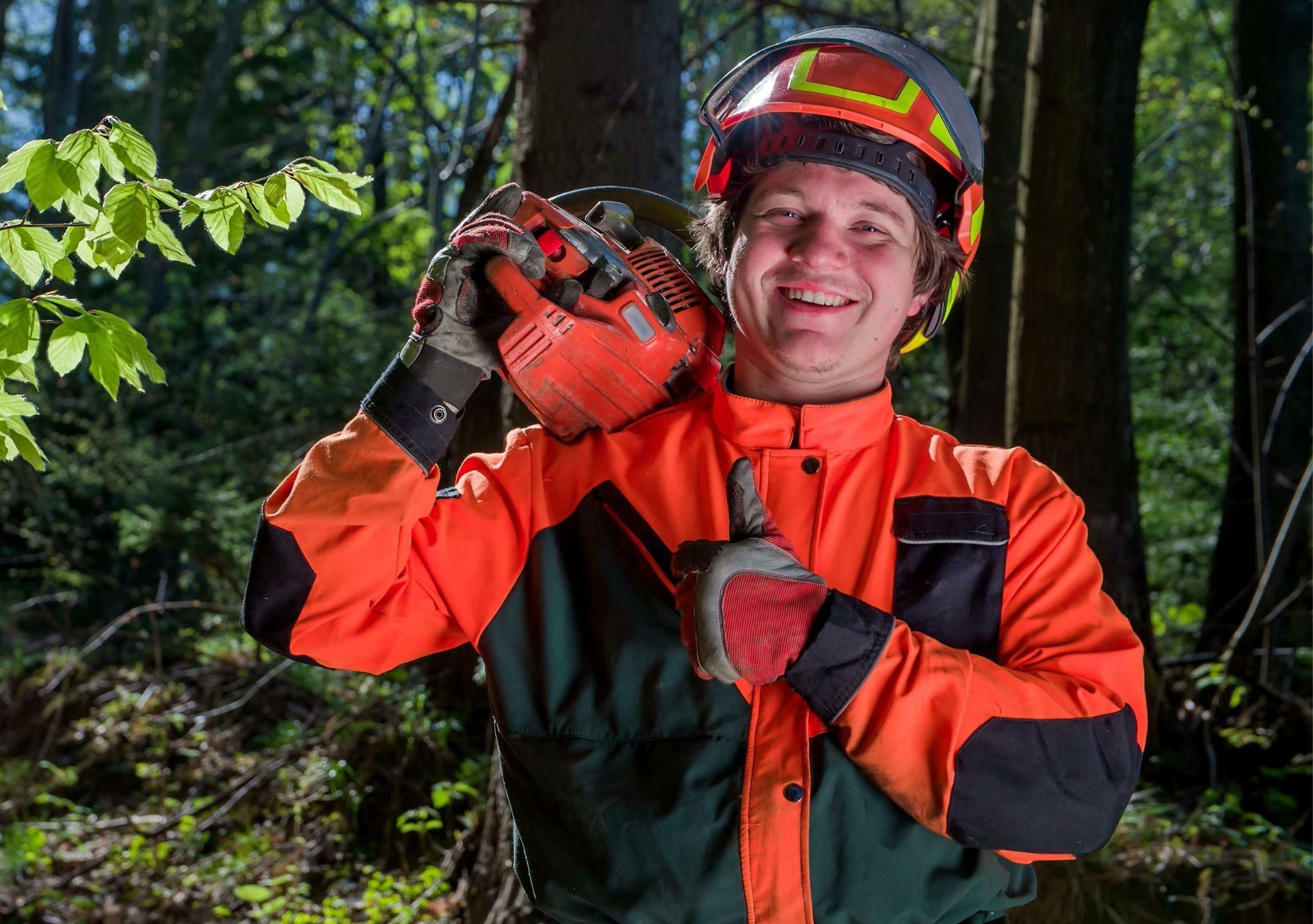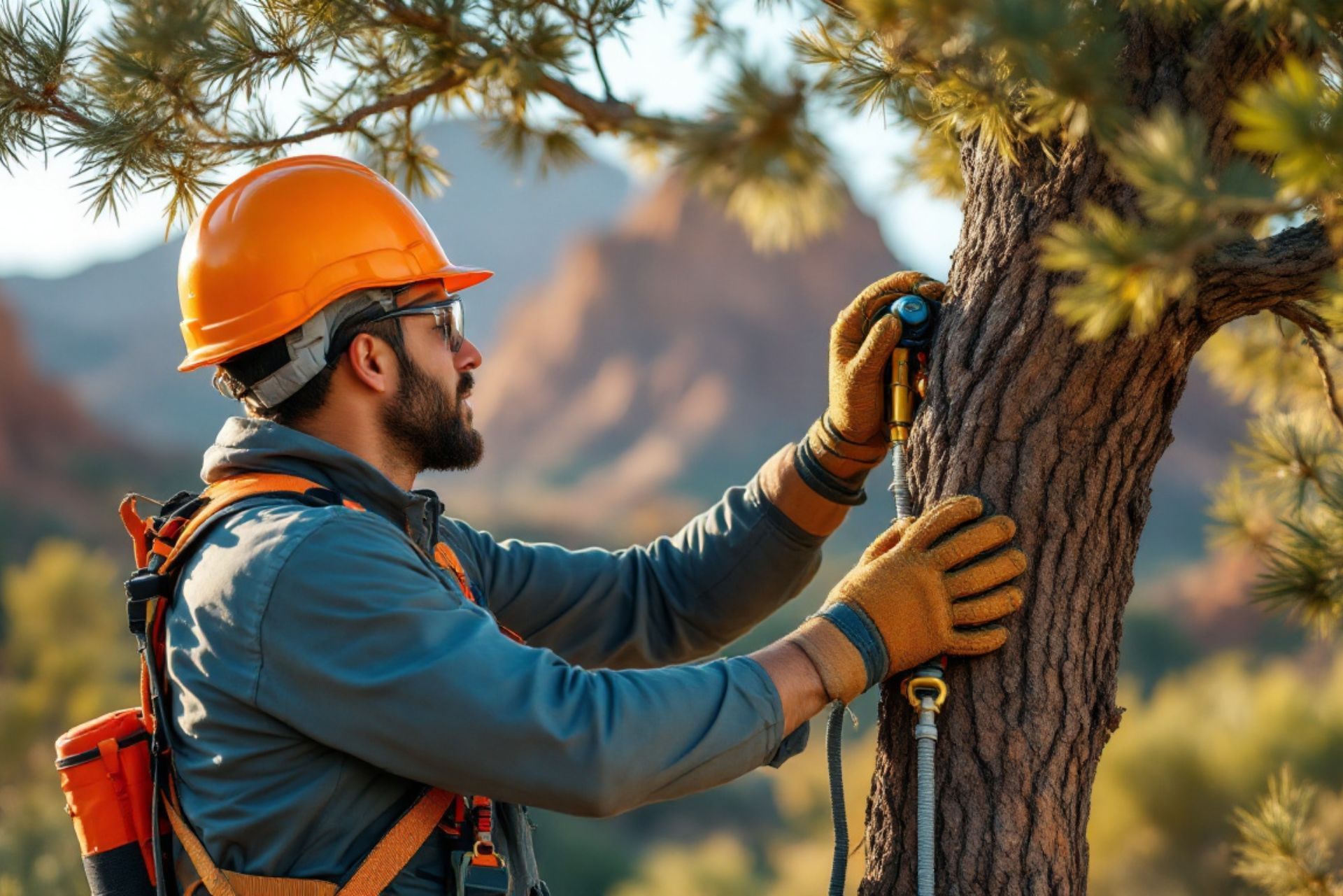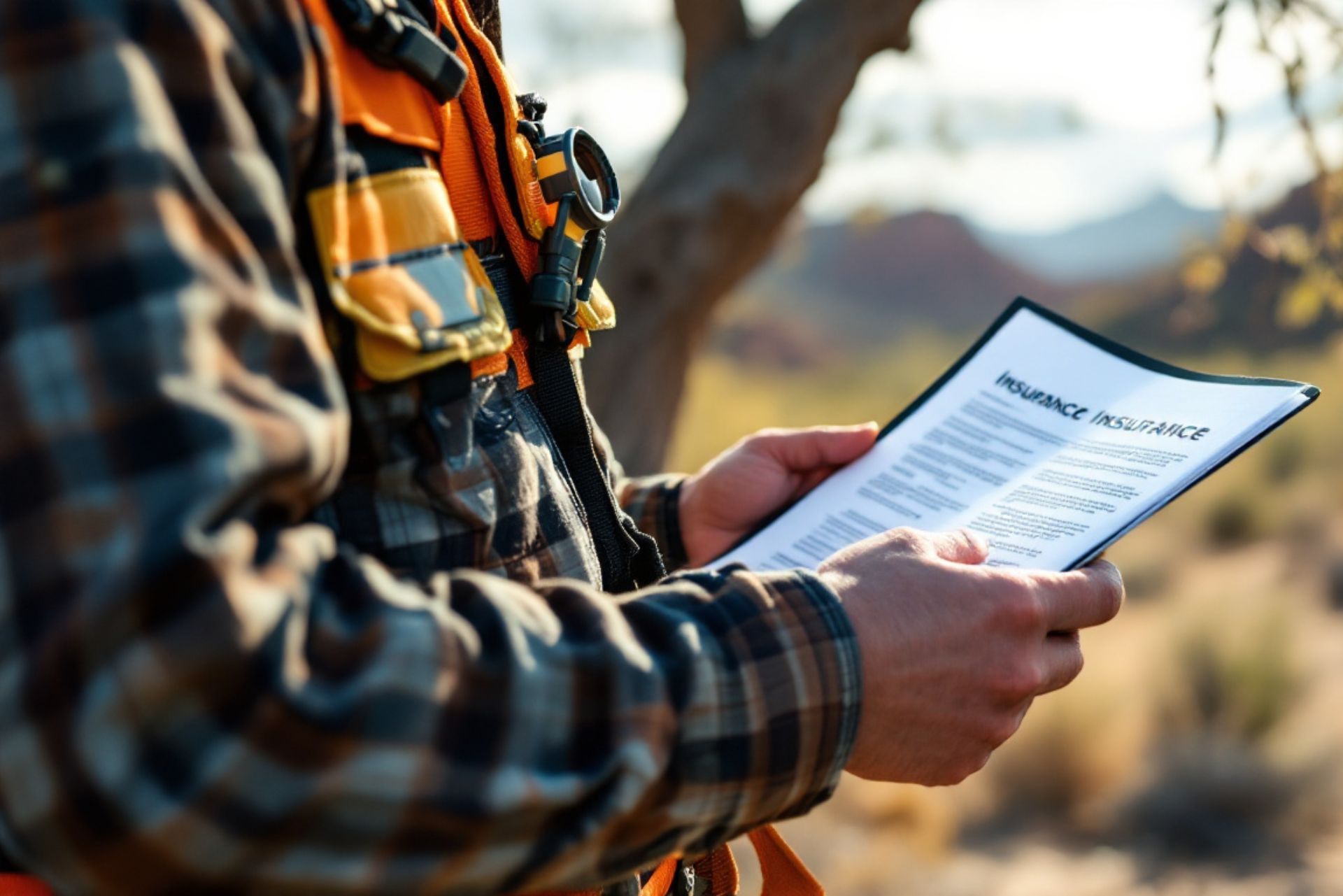
Most Common Business Policies
Index
Contact Us
Operating as an arborist in Arizona can be a rewarding profession, allowing individuals to work closely with nature and contribute to the health of the environment. However, like any profession, it comes with its own set of risks and challenges. This is where arborist insurance becomes essential. This article will cover everything you need to know about arborist insurance in Arizona, from the types of coverage available to the specific needs of arborists in the state.
Understanding Arborist Insurance
Arborist insurance is designed to protect professionals who work in tree care, including tree trimming, removal, and maintenance. This type of insurance helps mitigate the risks associated with the job, which can include property damage, personal injury, and equipment loss. Given the unpredictable nature of working with trees, having the right insurance coverage is not just a smart business decision; it is often a necessary requirement for securing contracts and ensuring peace of mind while on the job.
What Does Arborist Insurance Cover?
Arborist insurance typically includes several types of coverage, each addressing different aspects of the profession. The most common types of coverage include:
- General Liability Insurance: This protects arborists from claims of bodily injury or property damage that may occur during the course of their work.
- Workers' Compensation Insurance: This is vital for businesses with employees, as it covers medical expenses and lost wages for workers injured on the job.
- Equipment Insurance: Arborists rely on specialized tools and equipment, and this insurance covers loss or damage to these essential items.
Why Is Arborist Insurance Important?
The nature of arborist work involves significant risks. Climbing trees, operating heavy machinery, and working near power lines can lead to accidents that may result in severe injuries or property damage. Arborist insurance provides financial protection against these unforeseen events, ensuring that businesses can continue to operate even after an incident. In addition to protecting the business, it also safeguards clients from potential liabilities, creating a more secure working environment for everyone involved.
Additionally, having insurance can enhance a business's credibility. Clients are more likely to hire arborists who are insured, as it demonstrates professionalism and a commitment to safety. Furthermore, many municipalities and organizations require proof of insurance before granting permits for tree work, making it an essential component for any arborist looking to expand their client base. Beyond the basic coverage, some arborists may opt for additional policies, such as
professional liability insurance, which can provide further protection against claims of negligence or inadequate work. This comprehensive approach to insurance not only protects the arborist but also fosters trust with clients, reinforcing the importance of quality and reliability in the tree care industry.

Types of Insurance Coverage for Arborists
Choosing the right insurance coverage is crucial for arborists. Each type of coverage serves a specific purpose and can be tailored to meet individual business needs.
General Liability Insurance
General liability insurance is the cornerstone of any arborist's insurance policy. It covers claims related to bodily injury and property damage. For instance, if a tree falls and damages a neighbor's property during a job, this insurance can help cover the costs of repairs.
Moreover, general liability insurance can also cover legal fees if a client decides to sue for damages. This coverage is essential for protecting the financial stability of an arborist's business. Additionally, it can cover incidents that occur off-site, such as if an employee accidentally damages a customer's property while transporting equipment. This broad scope of protection is vital for maintaining a good reputation and fostering trust with clients, as it demonstrates a commitment to accountability and professionalism.
Workers' Compensation Insurance
For arborists with employees, workers' compensation insurance is not just a good idea; it is often legally required. This insurance covers medical expenses and lost wages for employees who are injured while working. Given the high-risk nature of tree care, having this coverage ensures that workers are protected and can receive the necessary care without financial burden.
In Arizona, workers' compensation laws require businesses to provide coverage for their employees, making it a critical component of any arborist's insurance plan. Furthermore, this insurance can also provide rehabilitation benefits for injured workers, helping them return to their jobs as quickly and safely as possible. By investing in workers' compensation, arborists not only comply with legal requirements but also foster a safer work environment, which can lead to higher employee morale and retention.
Equipment Insurance
Arborists use a variety of specialized tools and equipment, from chainsaws to chippers. Equipment insurance protects against loss or damage to these essential items. Whether due to theft, vandalism, or accidental damage, this coverage ensures that arborists can quickly replace or repair their equipment without incurring significant out-of-pocket expenses.
Investing in equipment insurance can also lead to peace of mind, allowing arborists to focus on their work rather than worrying about potential losses. Additionally, many policies offer coverage for rental equipment, which can be particularly beneficial during peak seasons when demand for specialized tools may exceed the arborist's current inventory. This flexibility allows businesses to take on larger projects without the fear of financial setbacks due to equipment failure or loss, ultimately enhancing operational efficiency and customer satisfaction.
Factors Affecting Arborist Insurance Costs
The cost of arborist insurance can vary widely based on several factors. Understanding these factors can help arborists make informed decisions when selecting their insurance coverage.
Business Size and Scope
The size of the arborist's business plays a significant role in determining insurance costs. Larger businesses with more employees and a broader range of services may face higher premiums due to increased risk exposure. Conversely, smaller operations may benefit from lower rates.
Additionally, the scope of services offered can influence costs. Arborists who provide more specialized services, such as tree removal in high-risk areas, may incur higher insurance premiums compared to those offering basic tree trimming services. For instance, businesses that engage in complex operations like crane-assisted tree removal or those that work with hazardous tree species may need to secure additional coverage, further impacting their overall insurance expenses. Understanding the nuances of service offerings can empower arborists to tailor their insurance policies to better fit their operational needs.
Location and Risk Factors
Arizona's diverse geography presents unique challenges for arborists. Areas prone to wildfires or severe weather conditions may lead to higher insurance costs due to the increased risk of property damage and liability claims. Understanding the specific risks associated with different regions in Arizona can help arborists anticipate their insurance needs. For example, urban areas may have different liability concerns compared to rural settings, where the risk of falling trees damaging property may be more pronounced. Additionally, local regulations and ordinances can also affect insurance requirements, making it essential for arborists to stay informed about the legal landscape in their operating regions.
Claims History
An arborist's claims history can significantly impact their insurance premiums. Businesses with a history of frequent claims may face higher rates, as insurers view them as higher risk. Maintaining a good safety record and minimizing claims can help keep insurance costs manageable. Moreover, implementing rigorous safety protocols and training programs can not only reduce the likelihood of accidents but also demonstrate to insurers that the business is proactive about risk management. This can lead to potential discounts on premiums or more favorable policy terms. Arborists should regularly review their safety practices and invest in ongoing education to ensure they are equipped to handle the inherent risks of their profession effectively.
Choosing the Right Insurance Provider
Selecting the right insurance provider is crucial for arborists. Not all insurance companies offer the same level of service or coverage options, so conducting thorough research is essential.
Assessing Coverage Options
When evaluating potential insurance providers, it is important to assess the coverage options they offer. Arborists should look for providers that specialize in commercial insurance and have experience working with tree care professionals. This ensures that the coverage is tailored to the unique risks associated with the profession.
Additionally, reviewing the policy details, including exclusions and limits, can help arborists make informed decisions about their coverage. Some policies may include specific provisions for equipment damage, liability for property damage, and even coverage for injuries sustained while on the job. Understanding these nuances can significantly impact an arborist's financial security and peace of mind.
Comparing Quotes
Obtaining quotes from multiple insurance providers is a smart strategy. This allows arborists to compare coverage options and premiums, ensuring they find the best fit for their needs and budget. It is important to remember that the cheapest option may not always be the best; evaluating the quality of coverage is equally important. Arborists should also inquire about any discounts available for bundling policies or for having a clean safety record, which can help reduce overall costs without sacrificing coverage quality.
Reading Reviews and Testimonials
Before committing to an insurance provider, reading reviews and testimonials from other arborists can provide valuable insights. Feedback from peers can highlight the strengths and weaknesses of a provider, helping arborists make a more informed choice. Engaging with professional networks or forums can also yield recommendations based on real-life experiences, offering a more comprehensive view of a provider's reliability and customer service. Additionally, it may be beneficial to consider the provider's responsiveness to claims and their overall reputation in the industry, as these factors can greatly affect an arborist's experience when it comes time to utilize their insurance coverage.

Common Misconceptions About Arborist Insurance
There are several misconceptions surrounding arborist insurance that can lead to confusion and poor decision-making. Understanding these misconceptions can help arborists navigate the insurance landscape more effectively.
“I Don’t Need Insurance If I’m Careful”
While taking precautions can reduce risks, accidents can still happen. Relying solely on careful practices is not enough to protect against potential liabilities. Insurance provides a safety net that can safeguard against unforeseen incidents. For instance, even the most experienced arborist can encounter unexpected challenges, such as equipment failure or sudden weather changes that can lead to accidents. Without insurance, the financial repercussions of these incidents can be devastating, potentially leading to lawsuits or hefty repair costs that could cripple a small business.
“All Insurance Policies Are the Same”
This misconception can lead to inadequate coverage. Not all insurance policies are created equal, and coverage can vary significantly between providers. Arborists should take the time to understand the specifics of their policy and ensure it meets their unique needs. For example, some policies may include coverage for equipment damage, while others might not cover certain types of liabilities. Additionally, factors such as geographical location and the specific services offered can influence the type of coverage needed. It’s crucial for arborists to consult with insurance professionals who specialize in their field to tailor a policy that adequately protects their business.
“Insurance Is Too Expensive”
While insurance costs can vary, the potential financial burden of an accident or liability claim far outweighs the cost of coverage. Investing in insurance is a proactive measure that can protect both the business and its assets in the long run. Moreover, many insurance providers offer flexible payment plans and discounts for bundling multiple policies, which can make coverage more affordable. Arborists should also consider the long-term benefits of insurance, such as peace of mind and the ability to take on larger projects without the fear of financial ruin. By viewing insurance as an investment rather than an expense, arborists can better appreciate its value in maintaining a sustainable and thriving business.
Steps to Obtain Arborist Insurance
Obtaining arborist insurance involves several steps, each crucial to ensuring adequate coverage. Following these steps can streamline the process and lead to better outcomes.
Evaluate Your Needs
The first step in obtaining arborist insurance is to evaluate specific needs. Consider the size of the business, the services offered, and the potential risks involved. This assessment will help determine the types and amounts of coverage required. For instance, if your business frequently handles large tree removals or works in urban areas with high foot traffic, you may need higher liability coverage to protect against potential accidents or property damage. Additionally, think about any specialized equipment you use, as this may necessitate additional coverage to safeguard against theft or damage.
Gather Necessary Documentation
Insurance providers typically require documentation to assess risk and provide accurate quotes. This may include business licenses, safety records, and details about the services offered. Having this information ready can expedite the application process. It’s also wise to compile records of past claims, if any, as this can impact your premiums and the type of coverage available. Furthermore, consider including proof of training or certifications for you and your team, as this demonstrates a commitment to safety and professionalism, which can be favorable during the underwriting process.
Consult with an Insurance Agent
Working with an insurance agent who specializes in arborist insurance can be beneficial. They can provide insights into the best coverage options and help navigate the complexities of insurance policies. An experienced agent can also assist in comparing quotes and understanding the fine print. Additionally, they can offer guidance on risk management practices that may lower your premiums, such as implementing safety training programs or maintaining regular equipment inspections. By leveraging their expertise, you can ensure that you’re not only getting the best price but also the most comprehensive coverage tailored to your specific business needs.
Maintaining Your Insurance Policy
Once arborist insurance is obtained, it is essential to maintain the policy effectively. Regular reviews and updates can ensure that coverage remains adequate as the business evolves.
Regularly Review Coverage Needs
As businesses grow and change, so do their insurance needs. Regularly reviewing coverage can help identify any gaps or areas that need adjustment. For example, if new equipment is purchased or additional employees are hired, it may be necessary to update the policy accordingly.
Stay Informed About Industry Changes
The arborist industry is subject to changes in regulations and best practices. Staying informed about these changes can help arborists adjust their insurance coverage as needed. This proactive approach can prevent potential issues down the line.
Communicate with Your Insurance Provider
Maintaining open communication with the insurance provider is key. If any changes occur within the business, such as a new service offering or a change in location, informing the insurer can help ensure that coverage remains appropriate and effective.
Conclusion
Arborist insurance is a vital component of running a successful tree care business in Arizona. With the inherent risks associated with the profession, having the right coverage can provide peace of mind and financial protection. By understanding the types of coverage available, the factors affecting costs, and the steps to obtain and maintain insurance, arborists can make informed decisions that benefit their business and clients alike.
Ultimately, investing in arborist insurance is not just about compliance; it is about safeguarding the future of the business and ensuring the safety of both workers and clients. As the industry continues to evolve, staying informed and proactive about insurance needs will be key to long-term success.
